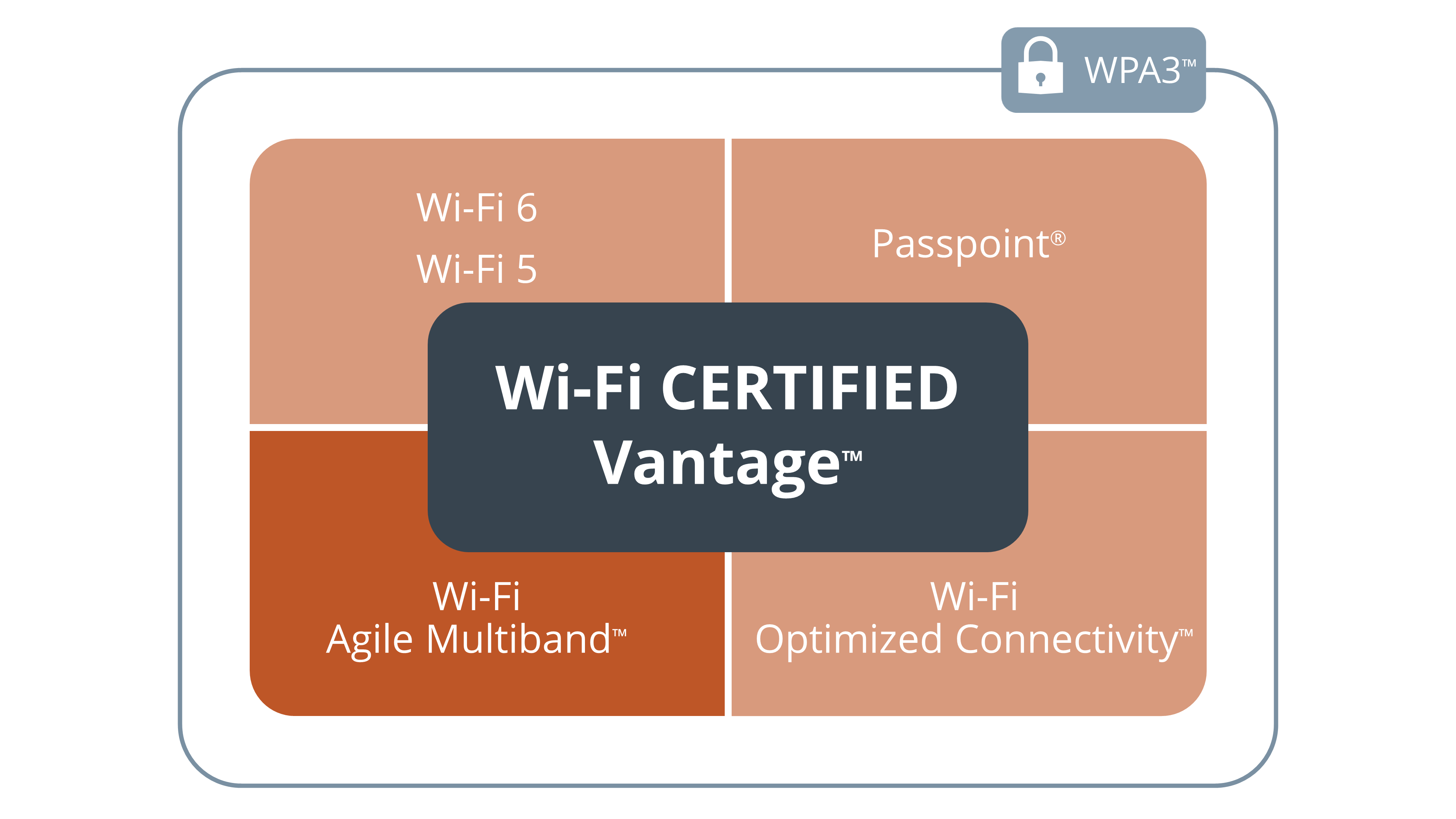
Wi-Fi®ネットワークの資源を有効管理
Wi-Fiネットワーク環境を効率的に管理するWi-Fi CERTIFIED Agile Multiband™によって、Wi-FiデバイスはWi-Fiネットワークの変化する状況に応じて最適な環境を選択することが可能になります。また、Wi-Fi CERTIFIED Agile Multibandは資源を効率的に活用することで、Wi-Fiネットワークの負荷のバランスを調整し、容量を高め、状況に応じた最高のWi-Fi体験をエンドユーザーに提供します。Wi-Fi CERTIFIED Agile Multibandでは、携帯電話やスマート テレビ、タブレットをはじめとするクライアント デバイスがインフラストラクチャ デバイスと情報を交換できるようになり、次のことが可能になります。
- 最適なアクセス ポイント(AP)、帯域、チャネルをインテリジェントに判断して選択
- 混雑している帯域やAPなどの資源の競争を回避
- 高い要件が求められる音声/動画アプリケーションなど、サービスの中断を最小限に抑える
- Wi-Fi環境の変化に影響されることなく高品質なサービスを提供
Wi-Fi Agile Multiband™は、複数の周波数帯域(2.4 GHz、5 GHz、6 GHz)を効率的に活用するだけでなく、スペクトルおよびネットワーク資源の効果的な管理、ネットワーク負荷の最適なバランス、モビリティの向上のためのメカニズムを備え、最高のユーザー体験を提供します。
動的なネットワーク モニタリング: APとクライアント デバイスは、現行のWi-Fiネットワーク環境に関する情報を継続的にやり取りします。
インテリジェントなガイド機能: 接続しているWi-Fi環境が混雑すると、APは他のAPや周波数帯、チャネルをクライアント デバイスに提案します。
スピーディなネットワーク移行: クライアント デバイスが次のAPや帯域、チャネルを選択すると、アソシエーションと接続が迅速かつシームレスに実行されます。
標準ベースのテクノロジーがインテリジェントなアプローチと相互接続性を実現
Wi-Fi Agile Multibandは標準ベースのテクノロジーを基盤にしているので、メーカーが異なる様々なデバイスを通じて、卓越したネットワーク管理を実現します。Wi-Fi Agile Multibandデバイスは、以下を含む様々なテクノロジーを基盤にしています。
- IEEE 802.11k: APとクライアント間におけるWi-Fi環境に関する情報交換をサポート
- IEEE 802.11v: クライアントのローミングの判断を支援するネットワーク情報を提供すると共に、ネットワーク全体の品質向上をサポート
- IEEE 802.11u: 他のネットワークへ接続する前のクライアント デバイスによる情報収集をサポート
- IEEE 802.11r: Wi-Fiネットワーク内のAP間におけるシームレスな移行(オプション)
- Wi-Fi Alliance策定テクノロジー: 交換した情報を補足し、優先すべきチャネルや帯域、APを識別することにより、Wi-Fi ネットワークのインテリジェントな管理性を強化
Wi-Fi Agile Multibandは、マネージド ネットワーク環境のユーザー体験を飛躍的に高めるテクノロジー スイート、Wi-Fi CERTIFIED Vantage™の主要コンポーネントの1つです。Wi-Fi Vantage™デバイスは、Wi-Fi Agile Multibandの効率的な資源管理、エンタープライズ レベルのセキュリティ、ハイパフォーマンスなWi-Fiといった特性を基盤に、厳格な要件が求められるネットワーク環境においても卓越したユーザー体験を提供します。



